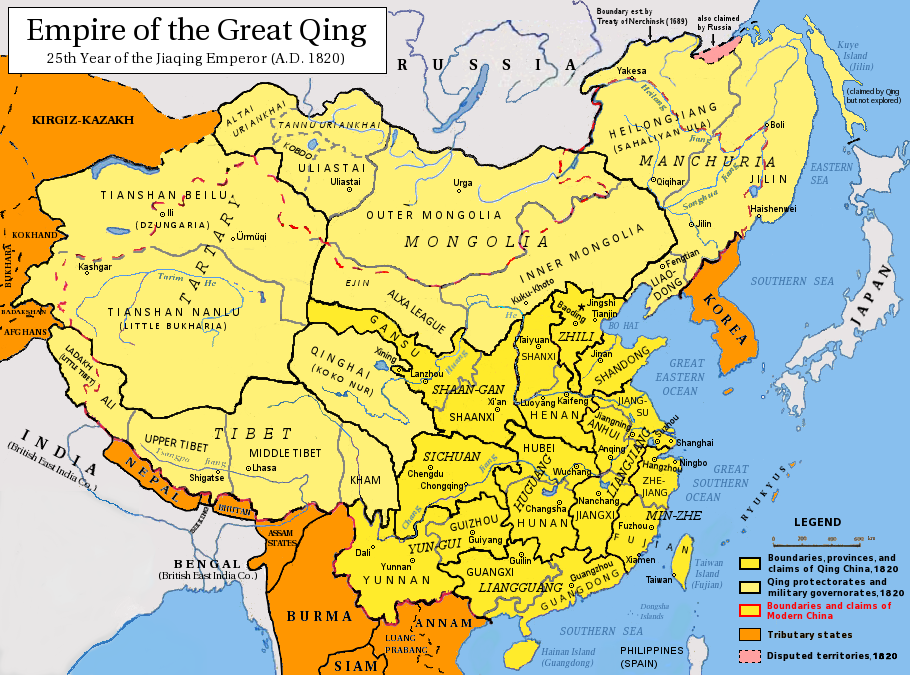|
Yun County, Hubei
Yunyang District (), formerly Yun County or Yunxian (), is a district of the prefecture-level city of Shiyan in northwestern Hubei Province, China. It borders the provinces of Henan (to the northeast) and Shaanxi (to the north and west). The district spans an area of 3,863 square kilometers, and has a population of 395,222 as of 2020. In 1992, the Yunxian Man, two crania of a species of ''Homo'', were found, dated to 900,000 years ago, and showing features of both ''Homo erectus'' and ''Homo sapiens''. Geography Approximately 60% of the district is forested. The Han River runs through the district, as well as its tributary Du River, and the . Climate Administrative divisions The district administers 16 towns, 3 townships, and 1 township-level forestry area. The district's 16 towns are , , , , , , , , , , , , , , , and . The district's 3 townships are Daliu Township, , and . The district also administers the Hongyanbei Forestry Area (), which operates as a township ... [...More Info...] [...Related Items...] OR: [Wikipedia] [Google] [Baidu] |
Postal Code Of China
Postal codes in the China, People's Republic of China () are postal codes used by China Post for the delivery of letters and goods within mainland China. China Post uses a six-digit all-numerical system with four tiers: the first tier, composed of the first two digits, show the provinces of China, province, province-equivalent direct-controlled municipalities of China, municipality, or autonomous regions of China, autonomous region; the second tier, composed of the third digit, shows the postal zone within the province, municipality or autonomous region; the fourth digit serves as the third tier, which shows the postal office within prefectures of the People's Republic of China, prefectures or prefecture-level city, prefecture-level cities; the last two digits are the fourth tier, which indicates the specific mailing area for delivery. The range 000000–009999 was originally marked for Taiwan (The Republic of China) but is not used because it not under the control of the People' ... [...More Info...] [...Related Items...] OR: [Wikipedia] [Google] [Baidu] |
Han River (Hubei)
The Han River, also known by its Chinese names Hanshui and Hanjiang, is a major river in Central China. A left tributary of the Yangtze, the longest river in Asia, it has a length of and is the longest tributary of the Yangtze system. The river gave its name to the ancient Chinese Han dynasty, which marked one of ancient China's first golden ages and through it, to the Han Chinese, the dominant ethnic group in modern China and the most populous ethnic group in the world. It is also the namesake of the city of Hanzhong on its upper course. Geography The headwaters of the Han flow from Mount Bozhong in southwestern Shaanxi. The stream then travels east across the southern part of that province. Its highland valley—known as the Qinba Laolin—divides and is protected by the Qinling or Qin Mountains to its north and the Dabashan or Daba Mountains to its south. The main cities are Hanzhong in the west and Ankang in the east. It then enters Hubei. It crosses most of Hubei f ... [...More Info...] [...Related Items...] OR: [Wikipedia] [Google] [Baidu] |
Aquaculture
Aquaculture (less commonly spelled aquiculture), also known as aquafarming, is the controlled cultivation ("farming") of aquatic organisms such as fish, crustaceans, mollusks, algae and other organisms of value such as aquatic plants (e.g. Nelumbo nucifera, lotus). Aquaculture involves cultivating freshwater, brackish water, and saltwater populations under controlled or semi-natural conditions and can be contrasted with commercial fishing, which is the harvesting of wild fish. Aquaculture is also a practice used for restoring and rehabilitating marine and freshwater ecosystems. Mariculture, commonly known as marine farming, is aquaculture in seawater habitats and lagoons, as opposed to freshwater aquaculture. Pisciculture is a type of aquaculture that consists of fish farming to obtain Fish as food, fish products as food. Aquaculture can also be defined as the breeding, growing, and harvesting of fish and other aquatic plants, also known as farming in water. It is an environme ... [...More Info...] [...Related Items...] OR: [Wikipedia] [Google] [Baidu] |
Animal Husbandry
Animal husbandry is the branch of agriculture concerned with animals that are raised for meat, animal fiber, fibre, milk, or other products. It includes day-to-day care, management, production, nutrition, selective breeding, and the raising of livestock. Husbandry has a long history, starting with the Neolithic Revolution when animals were first Domestication, domesticated, from around 13,000 BC onwards, predating farming of the History of agriculture, first crops. During the period of ancient societies like ancient Egypt, cattle, sheep, goats, and pigs were being raised on farms. Major changes took place in the Columbian exchange, when Old World livestock were brought to the New World, and then in the British Agricultural Revolution of the 18th century, when livestock breeds like the English Longhorn, Dishley Longhorn cattle and Lincoln (sheep), Lincoln Longwool sheep were rapidly improved by agriculturalists, such as Robert Bakewell (agriculturalist), Robert Bakewell, to yi ... [...More Info...] [...Related Items...] OR: [Wikipedia] [Google] [Baidu] |
Forestry
Forestry is the science and craft of creating, managing, planting, using, conserving and repairing forests and woodlands for associated resources for human and Natural environment, environmental benefits. Forestry is practiced in plantations and natural Stand level modelling, stands. The science of forestry has elements that belong to the biological, physical, social, political and managerial sciences. Forest management plays an essential role in the creation and modification of habitats and affects ecosystem services provisioning. Modern forestry generally embraces a broad range of concerns, in what is known as multiple-use management, including: the provision of timber, fuel wood, wildlife habitat, natural Water resources, water quality management, recreation, landscape and community protection, employment, aesthetically appealing landscapes, biodiversity management, watershed management, erosion control, and preserving forests as "Carbon dioxide sink, sinks" for Earth's atmosp ... [...More Info...] [...Related Items...] OR: [Wikipedia] [Google] [Baidu] |
Mu (China)
The mu () in Mandarin, mau or mou in Cantonese, or bo in Taiwanese Hokkien, also called Chinese acre, is a traditional Chinese unit of measurement for land area. One ''mu'' equals 666.67 square meters in mainland China, 761.4 square meters in Hong Kong and Macau, and 99.17 square meters in Taiwan and Japan. ''Mu'' is the only Chinese area unit legally retained by the People's Republic of China. Origin The ''mu'' was defined in terms of the ''bu'', or more precisely the square ''bu''. Deng Zhan of the Three Kingdoms era wrote that "in the old times 100 ''bu'' makes a ''mu'', but now 240 ''bu'' makes a ''mu''. Han dynasty fields use Qin dynasty units." Combined with known values of the Han dynasty ''chi'' and ''bu'', the "new" ''mu'' of the Han Dynasty is therefore 240 ''bu''2 = 240 ( × )2 = 461 m2. Mainland On 7 January 1915, the Beiyang government promulgated a measurement law to use not only the metric system as the standard but also a set of Chinese measu ... [...More Info...] [...Related Items...] OR: [Wikipedia] [Google] [Baidu] |
Cooperative
A cooperative (also known as co-operative, coöperative, co-op, or coop) is "an autonomy, autonomous association of persons united voluntarily to meet their common economic, social and cultural needs and aspirations through a jointly owned and democratically-controlled wikt:Enterprise, enterprise". Cooperatives are democratically controlled by their members, with each member having one vote in electing the board of directors. They differ from Collective farming, collectives in that they are generally built from the bottom-up, rather than the top-down. Cooperatives may include: * Worker cooperatives: businesses owned and managed by the people who work there * Consumer cooperatives: businesses owned and managed by the people who consume goods and/or services provided by the cooperative * Producer cooperatives: businesses where producers pool their output for their common benefit ** e.g. Agricultural cooperatives * Purchasing cooperatives where members pool their purchasing power ... [...More Info...] [...Related Items...] OR: [Wikipedia] [Google] [Baidu] |
Daliu Township, Hubei
Daliu () is a township in Yunyang District (formerly known as Yun County) in the Qin Mountains of northwestern Hubei province, China, located more than north-northwest of the county seat and north of downtown Shiyan. The township administers 12 villages. Administrative divisions , Daliu Township had twelve villages under its administration: * Yangjia (), Shizigou (), Jintang (), Zuoxisi (), Huanglongmiao (), Songshuwan (), Daliushu (), Yuliang (), Huajiahe (), Gangzigou (), Shuangping (), Baiquan () Demographics Daliu Township has a population of 11,762 according to the 2010 Chinese Census, down from the 14,195 recorded in the 2000 Chinese Census. The township has a hukou population of 14,143 as of 2019, up slightly from 14,138 in 2018. See also * List of township-level divisions of Hubei This is a list of township-level divisions of the province of Hubei, People's Republic of China (PRC). After province, prefecture, and county-level divisions, township-level divisi ... [...More Info...] [...Related Items...] OR: [Wikipedia] [Google] [Baidu] |
National Bureau Of Statistics Of The People's Republic Of China
The National Bureau of Statistics () is a deputy-ministerial level agency directly under the State Council of China. Established in August 1952, the bureau is responsible for collection, investigation, research and publication of statistics concerning the nation's economy, population and other aspects of the society. Kang Yi has served as the commissioner of the bureau since 3 March 2022. Responsibilities The bureau's authority and responsibilities are defined in ''Statistics Law of the People's Republic of China''. It is responsible for the research of the nation's overall statistics and oversees the operations of its local counterparts. Organizations The bureau is overseen by a commissioner, several deputy commissioners (currently four), a chief methodologist, a chief economist, and a chief information officer. It is composed of 18 departments, oversees 12 affiliated institutions, and manages 32 survey organizations stationed in respective provinces. It also operates ... [...More Info...] [...Related Items...] OR: [Wikipedia] [Google] [Baidu] |
Township-level Division
The administrative divisions of China have consisted of several levels since 1412, due to mainland China's large population and geographical area. In the People's Republic of China, the constitution provides for three levels of government. However in practice, there are five levels of local government; the provincial (province, autonomous region, municipality, and special administrative region), prefecture, county, township, and village. Since the 17th century, provincial boundaries in mainland China have remained largely static. Major changes since then have been the reorganization of provinces in the northeast after the establishment of the People's Republic of China in 1949 and the formation of autonomous regions, based on Soviet ethnic policies. The provinces serve an important cultural role in China, as people tend to identify with their native province. Levels The Constitution of the People's Republic of China provides for three levels: the provincial, the county leve ... [...More Info...] [...Related Items...] OR: [Wikipedia] [Google] [Baidu] |
Townships Of China
Townships ( zh, s=乡, labels=no), formally township-level divisions ( zh, s=乡级行政区, labels=no), are the basic level (fourth-level administrative units) of political divisions in the People's Republic of China. They are similar to municipalities and communes in other countries and in turn may contain village committees and villages. In 1995 there were 29,648 townships and 17,570 towns (a total of 47,218 township-level divisions) in China which included the territories held by the Republic of China and claimed by the PRC. Much like other levels of government in mainland China, the township's governance is divided between the Communist Party Township Secretary, and the " county magistrate" ( zh, s=乡长, hp=xiāngzhǎng, links=no). The township party secretary, along with the township's party committee, determines policy. The magistrate is in charge of administering the daily affairs of government and executing policies as determined by the party committee. A township o ... [...More Info...] [...Related Items...] OR: [Wikipedia] [Google] [Baidu] |





